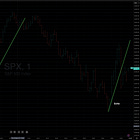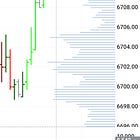Tempo > Volatility: The Only Edge You Can Scale
Most traders chase magnitude.
They want to know:
“Is the move big enough?”
But magnitude is noise if you don’t control when.
Volatility vs Frequency
Volatility = dispersion of returns. It tells you how big swings are, but not when.
Frequency / Tempo = rate at which bursts and collapses cluster in time. It’s the market’s metronome.
You can have:
High volatility with no tempo (chaotic big moves).
Modest volatility with very clear tempo (repeatable, seconds-level collapses).
My edge comes from exploiting the second.
I anchor not to size, but to timing.
Speed
Energy and memory are dormant without speed.
Speed is the conductor, fusing both into resolution.
It’s speed that compresses time, collapses variance, and forces probability into certainty.
The Drummer Analogy
Think of the market like a band:
Volatility is the volume knob — how loud the hits are.
Frequency / tempo is the drummer’s beat — when the hits arrive.
Most traders react to volume. I sync with the beat.
When you lock into the drummer’s tempo, the rest of the band (liquidity, algos, funds) has no choice but to follow.
Why This Works
Volatility traders are reactive: they wait for big swings and try to ride them.
I’m proactive: I collapse variance by striking in phase with the system’s dominant tempo.
This is how speed-proof bursts are authored — moves that look impossible to those waiting for confirmation.
Practical Takeaway
Volatility ≠ tempo.
Volatility measures how big.
Tempo measures when and how often.
When you map the market’s dominant tempos — phase, amplitude, and recurrence — you don’t need to guess. You know when the tape will collapse variance.
The result: variance collapse isn’t luck, it’s inevitability.






